
Seoraksan National Park: Korea's Natural Marvel
Discover Seoraksan National Park: South Korea's scenic wonder with breathtaking peaks, ancient temples, and rich biodiversity, perfect for hikers and nature lovers alike.
Seoraksan National Park, located in the northeastern region of South Korea, is a treasure trove of natural beauty and cultural heritage. The park is named after its highest peak, Seoraksan, which translates to 'Snowy Crag Mountain'. This majestic mountain range is known for its dramatic landscapes, including sharp granite peaks, lush forests, and clear streams. The park spans across four cities and counties, making it one of the largest and most diverse national parks in South Korea. Visitors to Seoraksan National Park can explore a variety of hiking trails that cater to all levels of experience. The Ulsanbawi Rock trail is a favorite among hikers, offering breathtaking views from the top. For those seeking a more leisurely experience, the Biryong Falls trail provides a scenic walk through dense forests and leads to a stunning waterfall. The park is also home to the ancient Sinheungsa Temple, which dates back to the 7th century and houses one of the largest bronze statues of Buddha in South Korea. Seoraksan National Park is not just about hiking and temples; it also boasts a rich biodiversity. The park is a designated UNESCO Biosphere Reserve, home to over 2,000 animal species and 1,400 plant species. In autumn, the park transforms into a vibrant tapestry of red, orange, and yellow leaves, making it a popular destination for leaf-peeping. Whether you're an adventure seeker, a nature lover, or a history enthusiast, Seoraksan National Park offers a unique and unforgettable experience.
Local tips in Seoraksan National Park
- Visit in autumn to witness the stunning fall foliage.
- Start your hike early in the morning to avoid the crowds.
- Wear sturdy hiking shoes, as some trails can be steep and rocky.
- Check the weather forecast, as conditions can change rapidly in the mountains.
- Carry enough water and snacks, especially if you plan to hike for several hours.
- Explore the Sinheungsa Temple for a mix of culture and history.
Seoraksan National Park: Korea's Natural Marvel
Seoraksan National Park, located in the northeastern region of South Korea, is a treasure trove of natural beauty and cultural heritage. The park is named after its highest peak, Seoraksan, which translates to 'Snowy Crag Mountain'. This majestic mountain range is known for its dramatic landscapes, including sharp granite peaks, lush forests, and clear streams. The park spans across four cities and counties, making it one of the largest and most diverse national parks in South Korea. Visitors to Seoraksan National Park can explore a variety of hiking trails that cater to all levels of experience. The Ulsanbawi Rock trail is a favorite among hikers, offering breathtaking views from the top. For those seeking a more leisurely experience, the Biryong Falls trail provides a scenic walk through dense forests and leads to a stunning waterfall. The park is also home to the ancient Sinheungsa Temple, which dates back to the 7th century and houses one of the largest bronze statues of Buddha in South Korea. Seoraksan National Park is not just about hiking and temples; it also boasts a rich biodiversity. The park is a designated UNESCO Biosphere Reserve, home to over 2,000 animal species and 1,400 plant species. In autumn, the park transforms into a vibrant tapestry of red, orange, and yellow leaves, making it a popular destination for leaf-peeping. Whether you're an adventure seeker, a nature lover, or a history enthusiast, Seoraksan National Park offers a unique and unforgettable experience.
When is the best time to go to Seoraksan National Park?
Iconic landmarks you can’t miss
Sokcho Tourist & Fishery Market
Explore Sokcho Tourist & Fishery Market, where fresh seafood meets vibrant street food in a cultural feast for all senses.

Yeonggeumjeong Pavilion
Experience the breathtaking views and serene atmosphere of Yeonggeumjeong Pavilion, a cultural gem in Sokcho, South Korea.

Naksansa Temple
Discover the tranquil beauty and spiritual essence of Naksansa Temple, a historic Buddhist sanctuary overlooking the East Sea in Gangwon-do, South Korea.
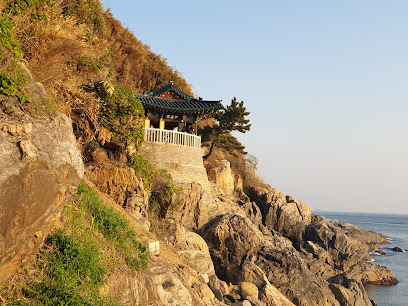
Seoraksan Cable Car
Experience breathtaking views and natural beauty at Seoraksan Cable Car, a must-visit tourist attraction in South Korea's stunning national park.
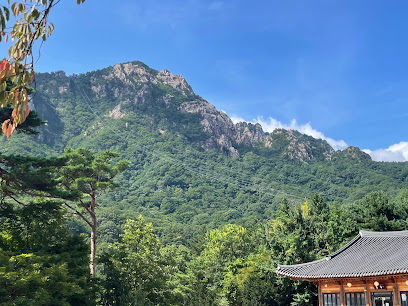
Seoraksan National Park Seorak District
Explore the breathtaking landscapes and rich biodiversity of Seoraksan National Park, a premier destination for nature lovers and adventure seekers in South Korea.

Sokcho Beach
Discover the beauty of Sokcho Beach, a stunning coastal haven in South Korea perfect for relaxation, adventure, and local culinary delights.

Hanhwa Resort Seorak Sorano
Experience the ultimate family-friendly getaway at Hanhwa Resort Seorak Sorano, where adventure meets relaxation in the heart of nature.

Lotte Resort Sokcho
Discover luxury and relaxation at Lotte Resort Sokcho, a coastal paradise offering stunning views, a water park, and access to nature's wonders.

Naksan Beach
Discover the beauty of Naksan Beach, a serene coastal paradise in Gangwon-do, perfect for relaxation, adventure, and cultural exploration.

Seorak Waterpia
Experience the ultimate water adventure at Seorak Waterpia, where thrilling slides and serene pools await amidst the natural beauty of Gangwon-do.

Seoraksan Sinheungsa Temple
Experience tranquility and cultural richness at Seoraksan Sinheungsa Temple, a serene Buddhist sanctuary in the heart of South Korea's natural beauty.

Kumho Seorak Resort
Discover tranquility and adventure at Kumho Seorak Resort in Sokcho-si, Gangwon-do, surrounded by stunning mountain views and nature's beauty.

Biseondae Peak
Explore Biseondae Peak in Seoraksan National Park - a breathtaking hiking destination with stunning views and rich biodiversity.

Seoraksan National Park Osaek Zone
Explore the Osaek Zone of Seoraksan National Park, a breathtaking natural reserve in South Korea with stunning landscapes, diverse wildlife, and soothing hot springs.

Kensington Hotel Seorak
Experience luxurious comfort at Kensington Hotel Seorak, your perfect base for exploring the stunning Seoraksan National Park in South Korea.

Unmissable attractions to see
Yeonggeumjeong Pavilion
Discover the tranquility and stunning views at Yeonggeumjeong Pavilion, a must-visit tourist attraction in Sokcho-si, Gangwon-do, South Korea.
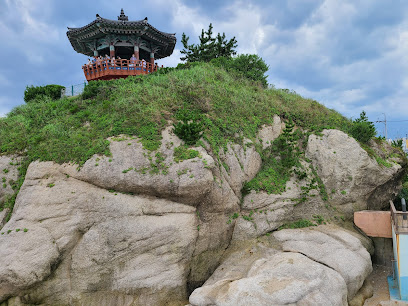
Seoraksan National Park Seorak District
Experience the breathtaking beauty of Seoraksan National Park, a national reserve in Sokcho-si, renowned for its stunning landscapes and rich biodiversity.

Hangyeryeong Service Area
Discover Hangyeryeong Service Area, a scenic rest stop in Gangwon-do, offering delicious food, shopping, and breathtaking views.

Abai Village
Experience the rich heritage and scenic beauty of Abai Village in Sokcho-si, South Korea, where history and nature come together.

Expo Tower
Explore the stunning panoramic views of Sokcho from the Expo Tower, an unforgettable observation deck experience in Gangwon-do, South Korea.
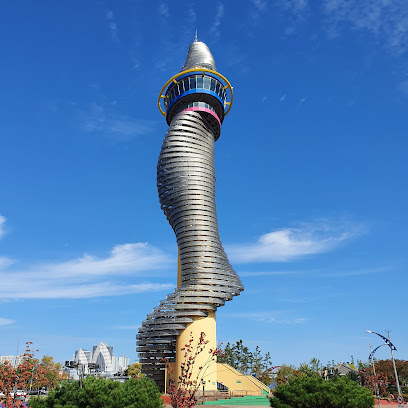
Yondaeri Maebawi Artificial Waterfall
Discover the breathtaking Yondaeri Maebawi Artificial Waterfall in Inje-gun, a serene escape amidst nature's beauty in Gangwon-do.
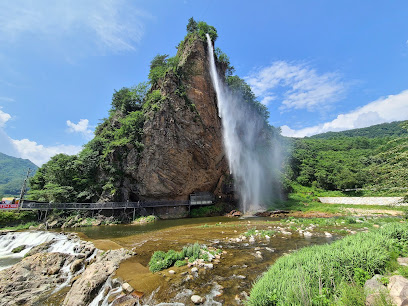
National Mountain Museum
Discover Korea's breathtaking mountainous landscapes at the National Mountain Museum, where nature's beauty and educational exhibits await.

Ulsanbawi Rock
Explore the breathtaking beauty of Ulsanbawi Rock in Seoraksan National Park, a hiking paradise with stunning views and rich biodiversity.

Cheongchoho Lake Park
Discover the serene beauty of Cheongchoho Lake Park in Sokcho, where nature and tranquility come together for an unforgettable experience.

설악산자생식물원
Explore the vibrant flora and stunning landscapes of Seoraksan Botanical Garden, a must-visit attraction in Sokcho-si, Gangwon-do.

Hongcheon Ginkgo Forest
Explore the enchanting beauty of Hongcheon Ginkgo Forest, famed for its golden autumn leaves and serene walking paths in the heart of Gangwon-do.

Sokcho Lighthouse
Discover the breathtaking views and rich maritime history at Sokcho Lighthouse, a must-visit tourist attraction along South Korea's stunning coast.

Gyejoam
Experience peace and spirituality at Gyejoam, a stunning Buddhist temple surrounded by the breathtaking landscapes of Seoraksan National Park.

Beombawi Rock
Explore Beombawi Rock, a breathtaking natural attraction in Sokcho-si, offering stunning views, rich history, and outdoor adventures for all travelers.

Seorak Mangyongdae
Explore the stunning landscapes and rich biodiversity of Seorak Mangyongdae, a must-visit scenic spot in South Korea's Gangwon-do.

Essential places to dine
Seoraksan National Park Seorak District
Explore breathtaking landscapes at Seoraksan National Park – South Korea’s gem of nature with majestic mountains and diverse wildlife.
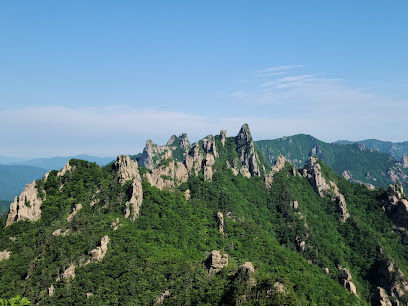
Hanhwa Resort Seorak Sorano
Experience family fun and relaxation at Hanhwa Resort Seorak Sorano - a stunning getaway near Seoraksan National Park in South Korea.

Seoraksan National Park
Experience breathtaking mountain vistas and rich biodiversity at Seoraksan National Park – a true gem of South Korea.

Matsu
Experience authentic Italian cuisine at Matsu in Sokcho – where every dish tells a story of flavor and tradition.

Solhyang
Discover authentic Korean cuisine at Solhyang in Sokcho - where tradition meets taste amidst beautiful Gangwon-do scenery.

Nonseondae
Experience authentic Korean cuisine surrounded by nature's beauty at Nonseondae in Seorak National Park.

Markets, malls and hidden boutiques
Bong Bread
Experience the delightful flavors of Bong Bread, Sokcho's bakery known for its artisanal breads and pastries, perfect for food lovers.

Seoraksan National Park
Explore the breathtaking landscapes and diverse wildlife of Seoraksan National Park, a perfect getaway for nature lovers and adventure seekers.

Sorak Cultural Center
Discover the heart of Korean culture at Sorak Cultural Center, a vibrant hub for arts, community events, and a unique bookstore experience.

놀다가개
Discover the ultimate pet paradise at 놀다가개 in Sokcho-si, where every pet lover finds something special for their furry friends.

동아문구완구레저유통
Explore the ultimate children's store in Sokcho-si, offering a delightful selection of toys, games, and learning materials for curious young minds.

대포항선물가게giftshop
Explore Daepo Hang Gift Shop in Sokcho for unique souvenirs and local delicacies that celebrate the charm of Gangwon-do.

CU 속초설악점
Experience convenience and local flavors at CU Sokcho Seorak, the ultimate stop for travelers exploring Sokcho and Seoraksan.

설악24시 할인마트
Discover local flavors and essentials at Seorak 24-Hour Discount Mart, your go-to grocery store in Sokcho, South Korea.

GS25설악산점
Discover local treats and essentials at GS25, your convenient stop in Seoraksan for snacks, drinks, and travel necessities.

고로케팩토리
Experience the sweet side of Sokcho at 고로케팩토리, where delightful croquettes and desserts bring a taste of Korea to your travels.

Seven Eleven
Discover convenience at Seven Eleven in Sokcho, offering local snacks, drinks, and essentials for your travel needs.
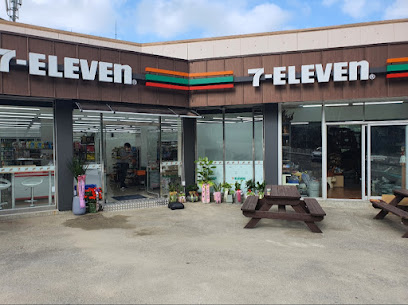
7-Eleven Seoraksan
Explore the beauty of Seoraksan with 7-Eleven, your one-stop convenience store for all hiking essentials and local snacks.

씨에프이십일
Explore the best of K-beauty at 씨에프이십일 in Sokcho, where quality meets style in a vibrant shopping experience.

한플라워 들국화화원
Experience the beauty of Korean craftsmanship at 한플라워 들국화화원, a charming gift shop in Sokcho-si, perfect for unique souvenirs and local art.

범우플라워 속초점
Discover unique gifts and souvenirs at 범우플라워 속초점, a charming gift shop in Sokcho-si, Gangwon-do, perfect for tourists seeking local treasures.

Essential bars & hidden hideouts
몽트비어(MontBeer)
Discover the vibrant world of craft beer at 몽트비어 in Sokcho-si, a must-visit brewpub for every beer enthusiast.

크래프트루트
Discover Craft Root, a vibrant brewpub in Sokcho-si offering handcrafted beers and delicious local cuisine in a modern setting.

속초거북이
Experience the vibrant nightlife at Sokcho Turtle Bar, where delightful drinks and a friendly atmosphere await you in Gangwon-do.

가르텐비어
Experience the essence of local brews at Garten Beer, a charming pub in Sokcho, offering a cozy atmosphere and a variety of drinks to savor.

noosik
Experience the vibrant nightlife at Noosik, Sokcho's premier cocktail bar, offering innovative drinks and a lively atmosphere in Gangwon-do.

NOWHERE
Experience the vibrant nightlife at NOWHERE in Sokcho, where great music, unique cocktails, and delicious bites create unforgettable moments.
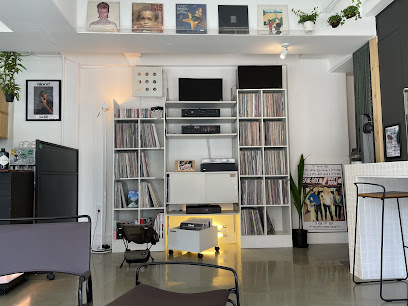
Muni
Discover Muni, Sokcho's charming wine bar, offering a cozy atmosphere and a diverse selection of wines to enhance your travel experience.

디웨일즈 카페&펍
Experience the warm hospitality and unique drinks at 디웨일즈 카페&펍, a must-visit bar in Sokcho, Gangwon-do.

소소리44
Discover the elegance of fine wines at 소소리44, Sokcho's premier wine bar offering a cozy ambiance and an exquisite selection of local and international wines.

비어올레
Experience the vibrant nightlife of Sokcho at 비어올레, where cozy atmosphere meets delicious drinks in a charming bar setting.

브라더오뎅
Experience the vibrant local culture and cozy ambiance at 브라더오뎅 in Sokcho-si, Gangwon-do - a bar that captures the essence of the region.

Ijeu
Discover the vibrant atmosphere and delightful drinks at Ijeu, a cozy bar in Sokcho-si, perfect for unwinding after your adventures in Gangwon-do.

where u at?
Experience the vibrant nightlife of Sokcho at this premier bar, where local brews and unique cocktails await in a lively atmosphere.

럭키램프
Discover the cozy atmosphere and diverse drink menu at Lucky Lamp Bar, a must-visit spot in Sokcho for relaxation after your adventures.

호프마니아
Discover the lively ambiance and delightful drinks at 호프마니아, the ultimate bar experience in Sokcho, Gangwon-do.

Local Phrases about Seoraksan National Park
-
- Hello안녕하세요
[annyeonghaseyo] - Goodbye안녕히 가세요
[annyeonghi gaseyo] - Yes네
[ne] - No아니요
[aniyo] - Please/You're welcome부탁합니다/천만에요
[butakhamnida/cheonmaneyo] - Thank you고맙습니다
[gomapseumnida] - Excuse me/Sorry죄송합니다
[joesonghamnida] - How are you?어떻게 지내세요?
[eotteoke jinaeseyo?] - Fine. And you?잘 지내고 있어요. 그대는?
[jal jinaego isseoyo. geudaeneun?] - Do you speak English?영어 할 수 있어요?
[yeongeo hal su isseoyo?] - I don't understand이해하지 못해요
[ihaehaji mothaeyo]
- Hello안녕하세요
-
- I'd like to see the menu, please메뉴를 보여주세요
[menyureul boyeojuseyo] - I don't eat meat고기를 먹지 않아요
[gogireul meokji anayo] - Cheers!건배!
[geonbae!] - I would like to pay, please결제할게요
[gyeoljehalgeyo]
- I'd like to see the menu, please메뉴를 보여주세요
-
- Help!도와주세요!
[dowajuseyo!] - Go away!가라!
[gara!] - Call the Police!경찰을 부르세요!
[gyeongchareul bureuseyo!] - Call a doctor!의사를 불러주세요!
[uisareul bulleojuseyo!] - I'm lost길을 잃었어요
[gireul ilheosseoyo] - I'm ill아파요
[apayo]
- Help!도와주세요!
-
- I'd like to buy...사고 싶어요...
[sago sipeoyo...] - I'm just looking둘러보고 있어요
[dulleobogo isseoyo] - How much is it?얼마에요?
[eolmaeyo?] - That's too expensive너무 비싸요
[neomu bissayo] - Can you lower the price?가격을 낮출 수 있어요?
[gageoreul najchul su isseoyo?]
- I'd like to buy...사고 싶어요...
-
- What time is it?지금 몇 시에요?
[jigeum myeot sieyo?] - It's one o'clock한 시에요
[han sieyo] - Half past (10)열 시 반
[yeol si ban] - Morning아침
[achim] - Afternoon오후
[ohu] - Evening저녁
[jeonyeok] - Yesterday어제
[eoje] - Today오늘
[oneul] - Tomorrow내일
[naeil] - 1하나
[hana] - 2둘
[dul] - 3셋
[set] - 4넷
[net] - 5다섯
[daseot] - 6여섯
[yeoseot] - 7일곱
[ilgop] - 8여덟
[yeodeol] - 9아홉
[ahop] - 10열
[yeol]
- What time is it?지금 몇 시에요?
-
- Where's a/the...?어디에...가 있어요?
[eodie...ga isseoyo?] - What's the address?주소가 뭐에요?
[jusoga mwoeyo?] - Can you show me (on the map)?지도로 보여주세요
[jidoro boyeojuseyo] - When's the next (bus)?다음 (버스) 언제와요?
[daeum (beoseu) eonjewayo?] - A ticket (to ....)표 하나 주세요
[pyo hana juseyo]
- Where's a/the...?어디에...가 있어요?
History of Seoraksan National Park
-
Seoraksan National Park, known for its stunning natural beauty, began forming over 230 million years ago during the Mesozoic Era. The rugged granite peaks and scenic valleys were shaped by volcanic activity and glacial erosion, creating a landscape that has captivated humans for millennia.
-
Seoraksan is deeply embedded in Korean mythology and folklore. It is one of the Five Guardian Mountains of Korea, believed to be protected by mountain spirits. The mountain's name itself, Seorak, means 'Snowy Crags Mountain,' inspired by the snow that covers its peaks for much of the year.
-
Sinheungsa Temple, founded in 652 AD by the monk Jajang, is one of the oldest Zen Buddhist temples in Korea. Nestled at the base of Seoraksan, the temple has a rich history and serves as a spiritual retreat for many. The Great Unification Buddha, a giant bronze statue, stands as a symbol of peace and unification.
-
During the Japanese occupation of Korea from 1910 to 1945, Seoraksan experienced significant changes. The Japanese government exploited the park's natural resources, leading to deforestation and ecological damage. However, the sacredness of the mountain helped in preserving some of its pristine areas.
-
Seoraksan was designated as a national park in 1970, the third to receive such a status in South Korea. This designation marked a commitment to preserving its unique biodiversity and stunning landscapes. In 1982, it was also designated as a UNESCO Biosphere Reserve, further highlighting its global ecological importance.
-
Daecheongbong Peak, the highest point in Seoraksan at 1,708 meters, holds cultural and historical significance. It is a popular destination for hikers and pilgrims, symbolizing the human spirit's resilience and determination. The peak offers stunning panoramic views that have inspired countless artists and writers.
-
In recent decades, Seoraksan has become a major tourist attraction, drawing visitors from around the world. The development of cable cars, well-maintained hiking trails, and visitor facilities has made the park more accessible while efforts continue to maintain its ecological integrity. The annual influx of tourists contributes significantly to the local economy.
Seoraksan National Park Essentials
-
Seoraksan National Park is located in Gangwon Province, South Korea. The nearest major city is Sokcho, which is about 20-30 minutes away by car. The most convenient way for international travelers to reach Seoraksan is by flying into Incheon International Airport in Seoul. From Seoul, you can take an intercity bus from Dong Seoul Bus Terminal to Sokcho, which takes approximately 2.5 to 3 hours. Alternatively, you can take an express bus from Seoul Express Bus Terminal. Once in Sokcho, local buses or taxis can take you directly to the park entrance.
-
Within Seoraksan National Park, hiking is the predominant way to explore its vast expanse. The park has well-marked trails for all levels of hikers. For those less inclined to hike, there are cable cars available that provide stunning views of the park. In Sokcho, public buses are available to take you from the city center to the park entrance. Taxis are also readily available and are a convenient option for direct transport. Renting a car gives you the flexibility to explore not only the park but also the surrounding areas at your own pace.
-
The official currency in South Korea is the South Korean Won (KRW). Credit cards are widely accepted in most hotels, restaurants, and larger shops in Sokcho and at major tourist spots within Seoraksan National Park. However, it is advisable to carry some cash for small purchases, admission fees, and in more remote areas where card payment might not be accepted. ATMs are available in Sokcho and at some key locations within the park.
-
Seoraksan National Park is generally a very safe destination for tourists. Crime rates are low, but it is always wise to take standard precautions such as not leaving your belongings unattended and avoiding walking alone in poorly lit areas at night. There are no specific high-crime areas targeting tourists within the park or in Sokcho. Always stick to the marked trails and follow park guidelines to avoid any natural hazards.
-
In case of emergency, dial 119 for immediate assistance from fire, medical, or police services. There are ranger stations located at various points throughout Seoraksan National Park, and park rangers are trained to handle emergencies. It is highly recommended to have travel insurance that covers medical emergencies. For minor health issues, pharmacies are available in Sokcho. Always carry a basic first aid kit when hiking.
-
Fashion: Do dress in layers and wear sturdy hiking boots if you plan to hike. Avoid wearing overly casual or revealing clothing. Religion: Do be respectful of local customs and traditions. Some temples and shrines within the park require modest dress. Public Transport: Do be polite and offer your seat to elderly passengers on buses. Don't talk loudly or disturb others. Greetings: Do greet people with a slight bow or a polite nod. A handshake may also be appropriate. Eating & Drinking: Do try local delicacies and accept food offerings graciously. Don't eat or drink while walking on the streets.
-
To experience Seoraksan National Park like a local, visit during the weekdays to avoid weekend crowds. Early mornings offer the best views and the most peaceful hiking experiences. Try to engage with locals and park rangers to learn about the unique flora and fauna in the park. Don't miss the chance to soak in a traditional Korean jjimjilbang (sauna) in Sokcho after a long day of hiking. Also, visit the Sokcho Tourist & Fishery Market for fresh seafood and local snacks.
Trending Landmarks in Seoraksan National Park
-
Sokcho Tourist & Fishery Market
-
Yeonggeumjeong Pavilion
-
Naksansa Temple
-
Seoraksan Cable Car
-
Seoraksan National Park Seorak District
-
Sokcho Beach
-
Hanhwa Resort Seorak Sorano
-
Lotte Resort Sokcho
-
Naksan Beach
-
Seorak Waterpia
-
Seoraksan Sinheungsa Temple
-
Kumho Seorak Resort
-
Biseondae Peak
-
Seoraksan National Park Osaek Zone
-
Kensington Hotel Seorak
Nearby Cities to Seoraksan National Park
-
Things To Do in Seoul
-
Things To Do in Suwon
-
Things To Do in Incheon
-
Things To Do in Andong
-
Things To Do in Daejeon
-
Things To Do in Pohang
-
Things To Do in Daegu
-
Things To Do in Gyeongju
-
Things To Do in Jeonju
-
Things To Do in Ulsan
-
Things To Do in Busan
-
Things To Do in Gwangju
-
Things To Do in Suncheon
-
Things To Do in Mokpo
-
Things To Do in Fukuoka












